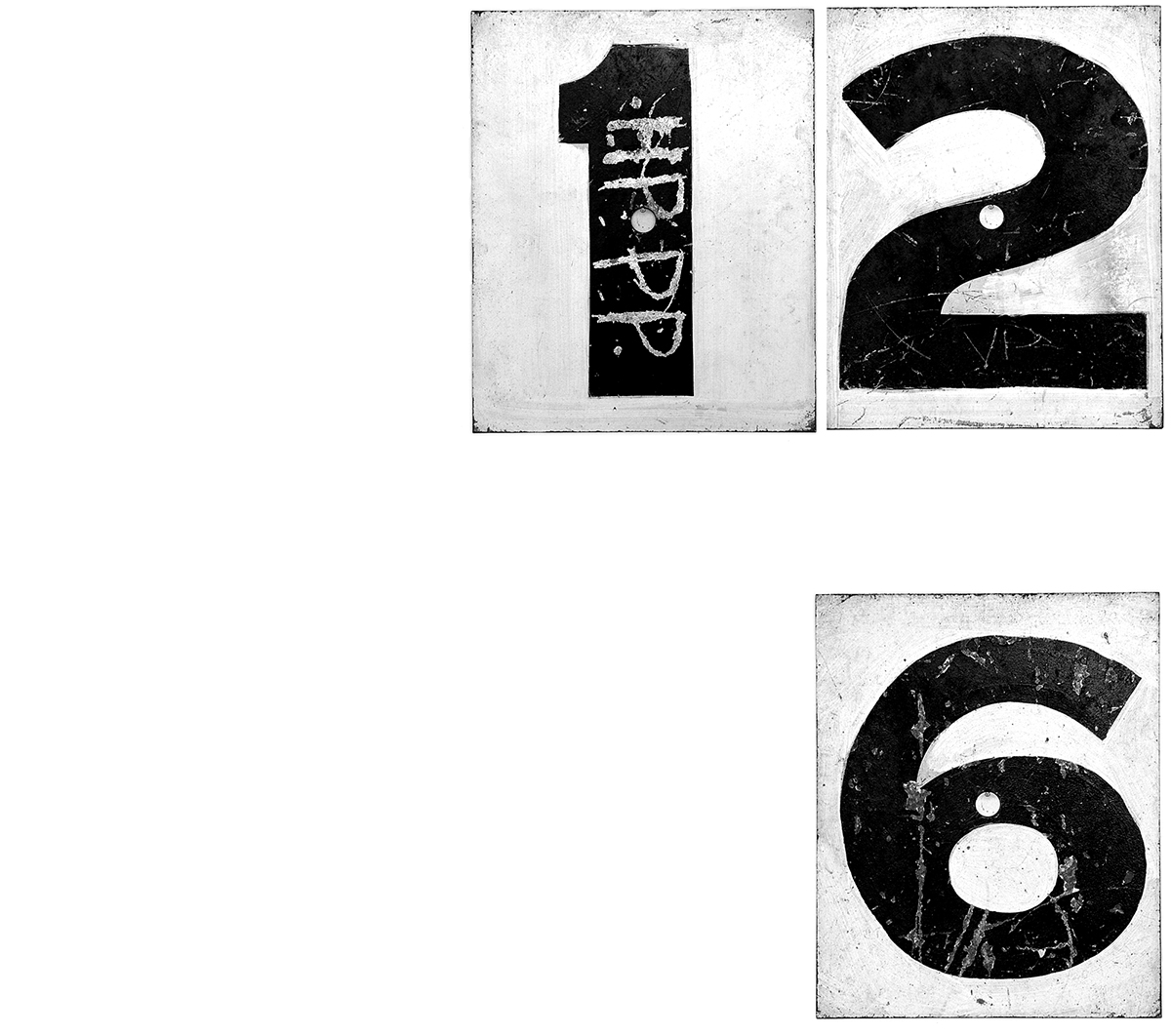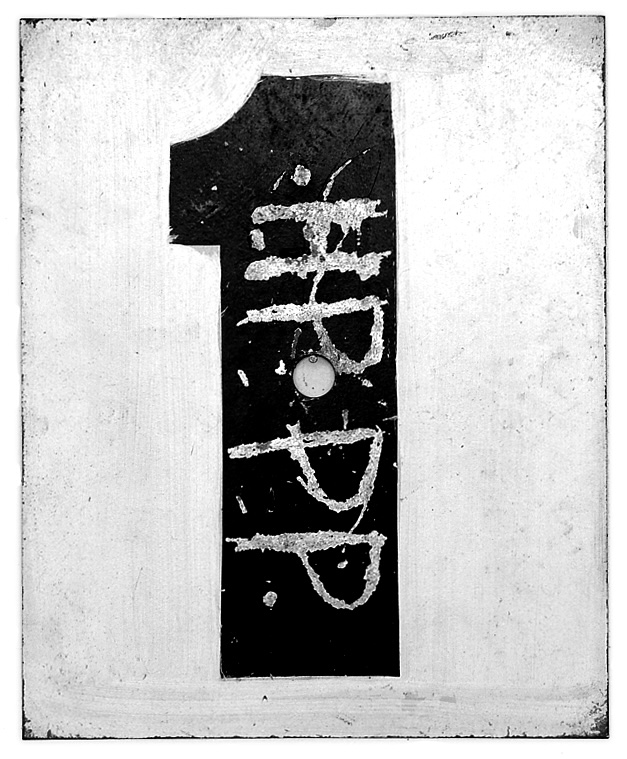Index*


More paranoid-critical1 map than editorial
Peripheral
(A Declaration) That this is—or that it aims to be—a peripheral publication for graphic design. That this occurred to us while putting this issue together [p.45]. That it could be applied to most, if not all, of the articles you see here. That it summed up nicely some of our earlier attempts to develop a ‘declaration’ for this project. That we like the connection to the optional bits and pieces you attach to your computer. But that, more generally a ‘periphery’ is an outer edge, an imprecise boundary of some domain. And therefore that, as our domain is graphic design, we will be calling ourselves peripheralists... as opposed to centralists.2 And finally that, we are aware of the oxymoronic nature of such a quest.
[14 FEB ‘06]
Print
We’ve been adamant for the duration that this needs to be a printed publication. It’s not that we ever thought it was a ‘better’ idea than publishing this stuff online—it’s probably not—but it’s what we wanted to do. If we weren’t printing it we probably wouldn’t be doing it.
[07 MAR ‘06]
Manifesto
The National Grid keeps returning to manifestos [p.90]. One of our early sessions was spent getting exasperated by the fundamentalist religious overtones of the New Zealand Government’s ‘Better by Design’ manifesto.3 We wanted to offer a counter-manifesto, inspired by the manifestos of early Modernism, like Jan Tschichold’s Die Neue Typographie, and of course The Communist Manifesto by Marx and Engels. Marx starts: ‘A spectre is haunting Europe—The spectre of communism. All the powers of old Europe have entered into a holy alliance...’, and we wanted to start off with an equally ominous statement. Marx’s writing was a salvation narrative, his chosen people the proletariat. We wanted to have our own design salvation narrative—to define ourselves in opposition to the ‘Better’ folk. A Manifesto does seem like a ridiculous idea in this day and age [p.33], but we were charmed by the romantic fervour and aggressive zeal of those early twentieth century glimpses of utopia. We thought we should fight fire with fire, evangelism with evangelism.
[18 FEB ‘06]
New Zealand
Somewhere
As in, “you have to start somewhere”. We said we were specifically interested in ‘New Zealand’ when we applied for funding. But at the time we were just saying what we needed to say. Now though, working on this from the other side of the world, I’m beginning to think it’s partly what validates the project. The ‘world’ at large probably doesn’t need this, but New Zealand could definitely do with it. And that seems like a good place to start. Having somewhere to start but to not know exactly where you’re going… it’s very Easy Rider. Although we’re less sure of ourselves than Peter Fonda and Denis Hopper were. We certainly aren’t ready to throw our watches away. We’re more “One foot on the platform, the other foot on the train”.4 But I like that. It’s negotiating the coming/the going, the lights on/the lights off [p.32], that makes it interesting and less like a job.
[01 JAN ‘06]
Negotiation
Kitchen Stories was ‘one of my top ten’ films last year. By Norwegian filmmaker Bent Hamer, it is a charming, gentle critique of innovation, social engineering, and positivism. It counters these scientific narratives with a story of the intractableness of human character, personal interaction, and negotiating actual situations. In the film, the Swedish Home Research Institute (in the 1950s) is trying to design the perfect kitchen, through the use of ‘neutral observation’, and probably things like user-testing, perceived-affordance, and problem solving. The crux of the film is the instruction from the HRI hierarchy that “Under no circumstances can the observer interact with the ‘subject’ of their observation.” [p.26].
[02 MAR ‘06]
Research5
[15 JAN ‘06]
Resonance
Aaron [p.53] wrote something last year about ‘aesthetic resonance’. It’s a nice idea. I tend to like it when people conflate discussions about sight and sound. There’s a bit of ‘music’ in this first issue, which I know worries you, but it seems natural to me. A lot of interesting graphic design has been done in or around the music industry, and I think it’s why many of us got into it in the first place. I think it would be really interesting if graphic design could look at itself in relation to music, rather than architecture or industrial design. Then we wouldn’t have to talk about problem solving, and we could talk about resonance instead.
[21 JAN ‘06]
Garage
Of course purists hate seeing old cars ‘chopped’ and modified. To many a hot rod is a mongrel, a mutated monster [p.33], a ‘bastard’ in the sense that it’s genealogy is hybrid and impure. But the interesting thing about a real hot rod is that it’s never really ‘finished’, it exists in a continual state of flux, or modification. We’d like to be able to side-step the puritanical tendencies of a lot of design writing and allow this project more of an anecdotal, casual-obsessive space to evolve... a lot like the suburban garage [p.58].
[26 FEB ‘06]
Better
Are things really ‘Better by Design’ [p.96] Sure sometimes they are, but I like ‘Better by Accident’ too. The New Zealand Design Taskforce report cover has the title; Success by Design Chance (with the word chance crossed out like that). I like the idea of ‘Success by Chance’ better. And ‘Design by Chance’. Sometimes things are ‘Worse by Design’. But often things are better because of all sorts of unpredictable exchanges, clever observations, lucky coincidences, nepotistic relationships, historical resonances, social negotiations, and persuasive performances. New Zealand’s ‘Better by Design’ moment is a study in myth making. These myths are absolutely necessary for the development and promotion of a culture, but they should not be mistaken for being really ‘real’. They must be criticised and questioned by the rest of us on the periphery, especially when the myths aren’t very convincing or useful.
[12 DEC ‘05]
Borrowing
#1 might be a bit heavy on the design found-object, a bit artefact-y. But I guess it reflects a bias towards the practice of graphic design being about documenting culture rather than creating culture. Artefacts are only interesting in as much as they index the rest of the world. I feel very suspicious when people talk about ‘creativity’ and ‘innovation’ in design.6 Apart from the fact that they are problematic terms in an intertextual world (and see Rosalind Krauss7), I like that I haven’t really had to design anything here. Just borrow. But also because of having to get permission to reproduce other peoples’ work we have opened up new connections in The Grid.
[06 MAR ‘06]
Intentions
What does #1 index? Where does it point? Having said we don’t necessarily know where The National Grid is headed, we obviously do have an (admittedly at times romantic) constantly evolving picture of the future in mind; 2 issues a year (as a rule of thumb), same shape and size, a loose sales and distribution plan, to be able to pay our contributors, having ‘guest’ designers for different issues maybe... you know, that kind of stuff.8
[13 MAR ‘06]
Plan
History
The National Grid came up as a title for something years ago. I can’t remember why. I just thought it sounded good, and you can apply whatever you like to it really.9 Pretty quickly it became an idea for a cheap lo-figraphic design fanzine that I talked to various people about, but it wasn’t until we had that caffiene-fuelled conversation in Sumner about a year ago now that it actually began to happen. You weren’t immediately sold on the name, and so I never mentioned this at the time, but Aaron and I had a band room right next door to a guy who had a small recording studio that he called ‘The National Grid’. It bugged me that he’d beaten us to using it but I thought it didn’t matter as we’re in different domains, and no one had really heard of the studio anyway. Then late last year The Bats released that album At The National Grid.
[02 MAR ‘06]
Grid
I wanted to write something called ‘Grid Theory’ for this first issue. Something huge and evangelical, but ultimately compact and entirely self-contained (paranoid), like Manhattan. Anyway I ended up living in Brooklyn (peripheral) and obviously I never wrote it.
[02 MAR ‘06]
Pseudonym
Some of my personal favourites; Bo Diddley, John Wayne, Le Corbusier, Poisin Ivy, Rockets Redglare, Segue Lugosi [p.8], Tristan Tzara, and Winona Ryder. Of course taking on a fictitious identity and not revealing your real name can cause some people to doubt your authenticity—a publication’s integrity —but we agreed that it… well, it’s sort of helped some people who don’t normally do what they’re doing here to do it. Many of us are ‘Aka-ing’ here in a sense—moonlighting—we’ve all got day jobs.
[10 JAN ‘06]
Commonplace
I have a folder on my desktop called ‘common places’. It’s where I put a whole lot of .docs to record random things I’m thinking about. The idea of Commonplaces, dates back to the Classical era. They were originally used as a support for rhetorical arguments. As they developed, Commonplace Books became, in a way, the precursors to modern encyclopaedias and dictionaries. But they were also sometimes more personal like diaries—they were where people recorded, for recall, the ‘places’ that they would refer back to for their knowledge, influences, arguments. I first thought this editorial would be an abstract of our commonplaces, but really the whole National Grid is our commonplaces [p.56].
[28 FEB ‘06]
Loose-ends
This whole endeavour really, is the result of us being at a bit of a loose-end. Neither of us were very good at being real graphic designers, I mean we could ‘design’ ok, but all that other stuff; time, money, people skills? Why we both ended up in education I guess. But we’re not entirely happy there either, and we’ve often joked around about our best students being unemployable. After dinner with Peter and Stuart I Googled them and I found that interview with Stuart10 where he mentions something about finding an escape route out of design, whereas I think for us this project has been more about finding a way back in.
[22 FEB ‘06]

courtesy of the Auckland Rugby League



Footnotes
Salvador Dali was interested in the ability of the paranoid mind to see and/or invent links and associations between things that are not obviously or rationally connected. He described his ‘Paranoid-Critical Method’—essentially attempting to simulate clinical paranoid schizophrenia —as a “spontaneous method of irrational knowledge based on the critical and systematic objectivity of the associations and interpretations of delirious phenomena”. ↵
John Watson, psychologist and founder of ‘Behaviorism’, explains peripheralism in relation to its antonym, centralism. Centralism proposes that the root causes of our behaviour are to be found in the central nervous system, the brain and spinal cord. Through ‘peripheralism’ Watson suggested that peripheral events, or human functions external to the central nervous system, such as those of skeletal muscles or the sex organs, play a major role in behaviour. ↵
See Design Taskforce report: http://www.nzte.govt.nz/section/13680.aspx ↵
From ‘House of The Rising Sun’. A traditional folk-song, authorship of these lyrics dubiously attributed to Georgia Turner and Bert Martin. I like Dylan’s version best. ↵
‘‘I don’t want to bother you much with what happened to me personally,’ he began, showing in his remark the weakness of many tellers of tales who seem so often unaware of what their audience would best like to hear; “yet to understand the effect of it on me you ought to know how I got out there, what I saw, how I went up the river to the place where I first met the poor chap. It was the farthest point of navigation and the culminating point of my experience. It seemed somehow to throw a kind of light on everything about me—into my thoughts. It was sombre enough, too—and pitiful—not extraordinary in a way—not very clear either. No, not very clear. And yet it seemed to throw a kind of light’.’ Marlow begins the story of his search for Kurtz in Joseph Conrad’s Heart of Darkness, Penguin Books Ltd., 1989 (32). ↵
‘On the Beck’s Futures website the word ‘innovative’ crops up several times. Terms such as innovative, original, ground-breaking and cutting edge make me suspicious. These are not words an artist would ever use about himself or his work. They are PR terms, they are words used to engage a news agenda, to appeal to a desire akin to the male sexual appetite, a lust for fresh meat. The economist and social philosopher Ludwig von Mises said: ‘Innovation is the whim of an elite before it becomes the need of the public’.’ Grayson Perry, ‘It’s original, but is it any good?’ The Times, 22 February 2006. ↵
See The Originality of The Avante-Garde and Other Modernist Myths. ↵
An authentic last minute decision based on superstitious advice that it’s bad luck to state your intentions for a publication’s future too plainly in it’s first issue. ↵
Years ago my father got electrocuted. He was unplugging an old clock for my grandmother and the plastic casing came away in his hand causing him to touch the wires. Everyone saw it happen, and for a second we all just kind of stood there looking at dad lying on the floor, wondering what to do and whether or not he was dead. I’d recently seen the movie of that Stephen King book The Lawn Mower Man, and I distinctly remember looking at dad and imagining that he’d just been uploaded into the national grid and was probably in the traffic lights outside by now. ↵
Interview with Stuart Bailey by Jon Sueda. http://www.underconsideration.com/speakup/interviews/bailey.html (last accessed 30 February 2006). ↵
